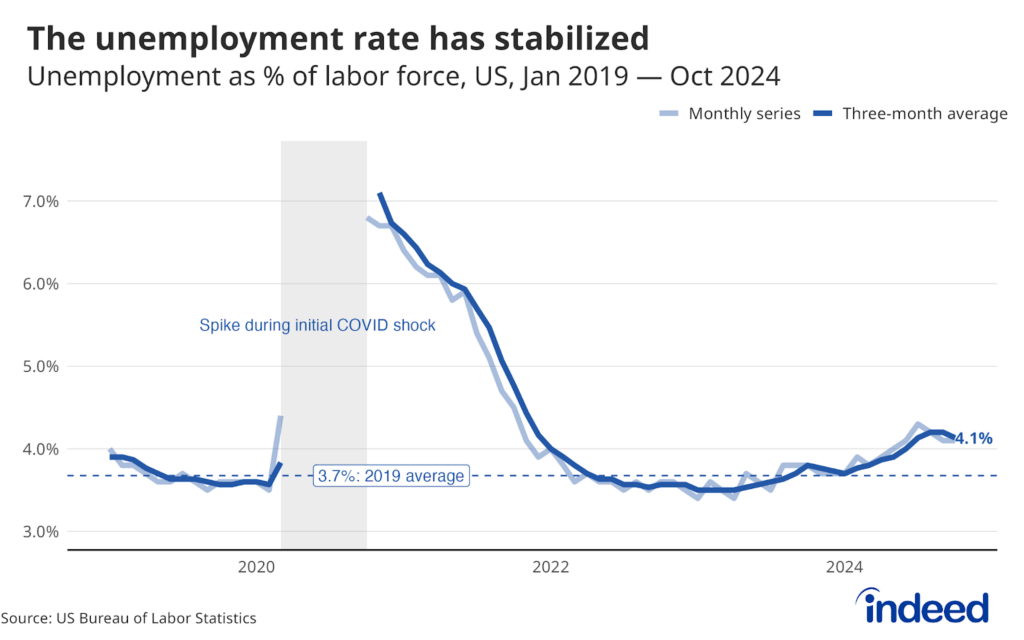Over the next ten years, the labor market is projected to grow at the extremes while the middle remains more sluggish. For the economy overall, job growth will likely be 7.4% from 2016 to 2026, according to new projections by the U.S. Bureau of Labor Statistics (BLS).
But these projections suggest uneven job growth. The fastest growing sector, healthcare support, is projected to grow 23%, while production (that is, manufacturing) jobs will shrink by 4%. These projections point to particularly fast job growth for highly educated women and in big coastal cities, but slower growth for men with high school degrees and in places that voted more strongly for President Trump.
No projections are perfect, of course, including the BLS’s. They aren’t intended to predict the next recession, and they’re likely to get job growth in some industries and occupations wildly wrong, especially in volatile sectors like mining and construction. Still, projections are a useful guide to long-run trends even if they can miss near-term gyrations in the economy.
More clean energy and healthcare jobs; fewer secretaries
The fastest growing sectors are projected to be healthcare support, personal care and service, and healthcare practitioners and technical occupations. Production is expected to shrink, and the farming, fishing, and forestry sector will be essentially flat. The office and administrative support sector will likely grow only minimally (0.6%) over the next ten years. Importantly, the office/admin sector is twice as large as the production and agriculture sectors combined, so slow growth in that sector will affect numerous workers.
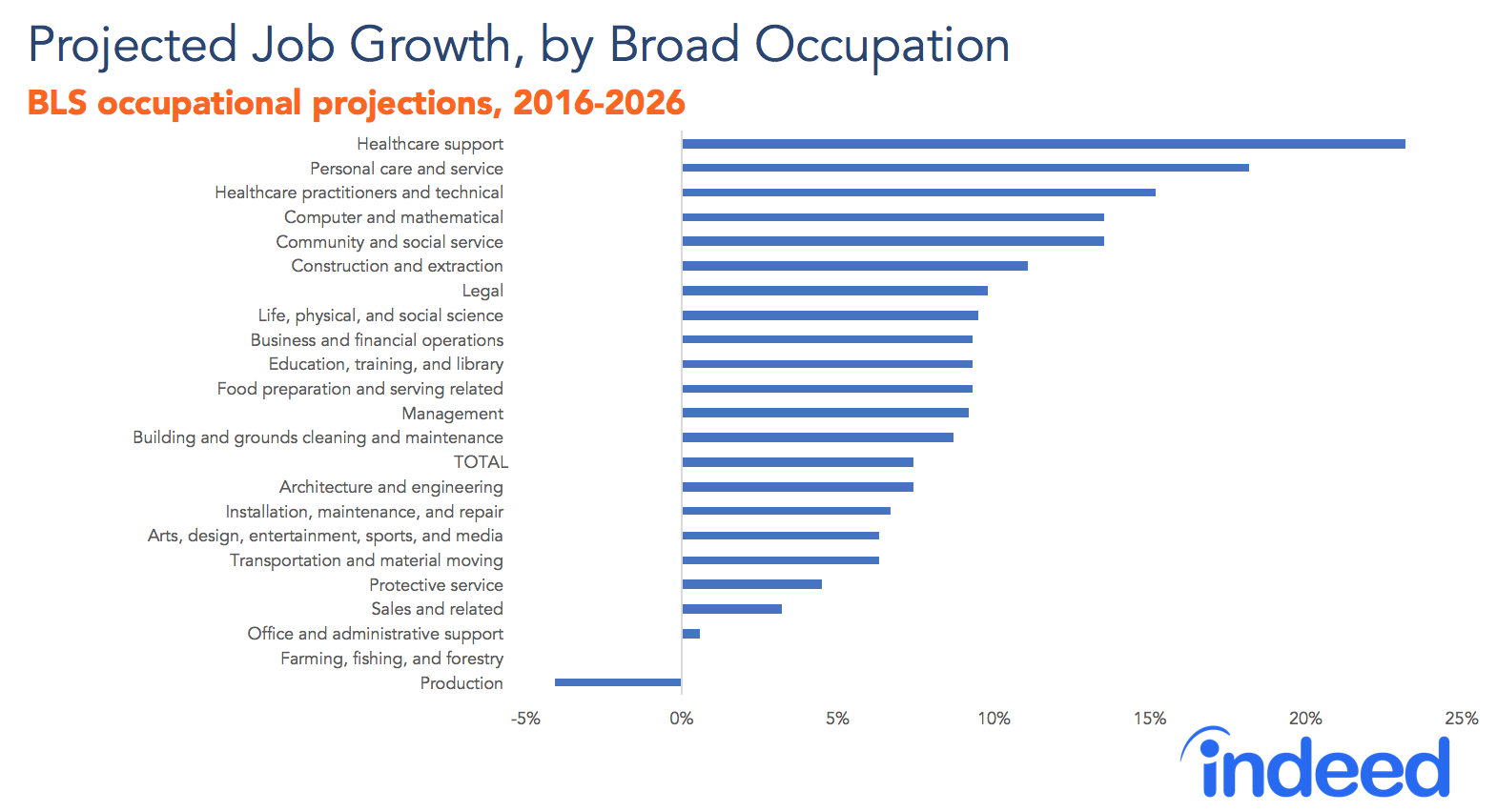
Looking at projections for detailed occupations, many of the fastest growing are within healthcare and personal care. Home health aides, physician assistants, personal care aides, and nurse practitioner jobs are all projected to grow by at least a third. But the fastest growing jobs are projected to be in clean energy: solar photovoltaic installer and wind turbine service technician jobs are expected to double. Four of the ten fastest growing occupations pay at least $100,000 a year, according to the BLS: physician assistants, nurse practitioners, software developers, and mathematicians.
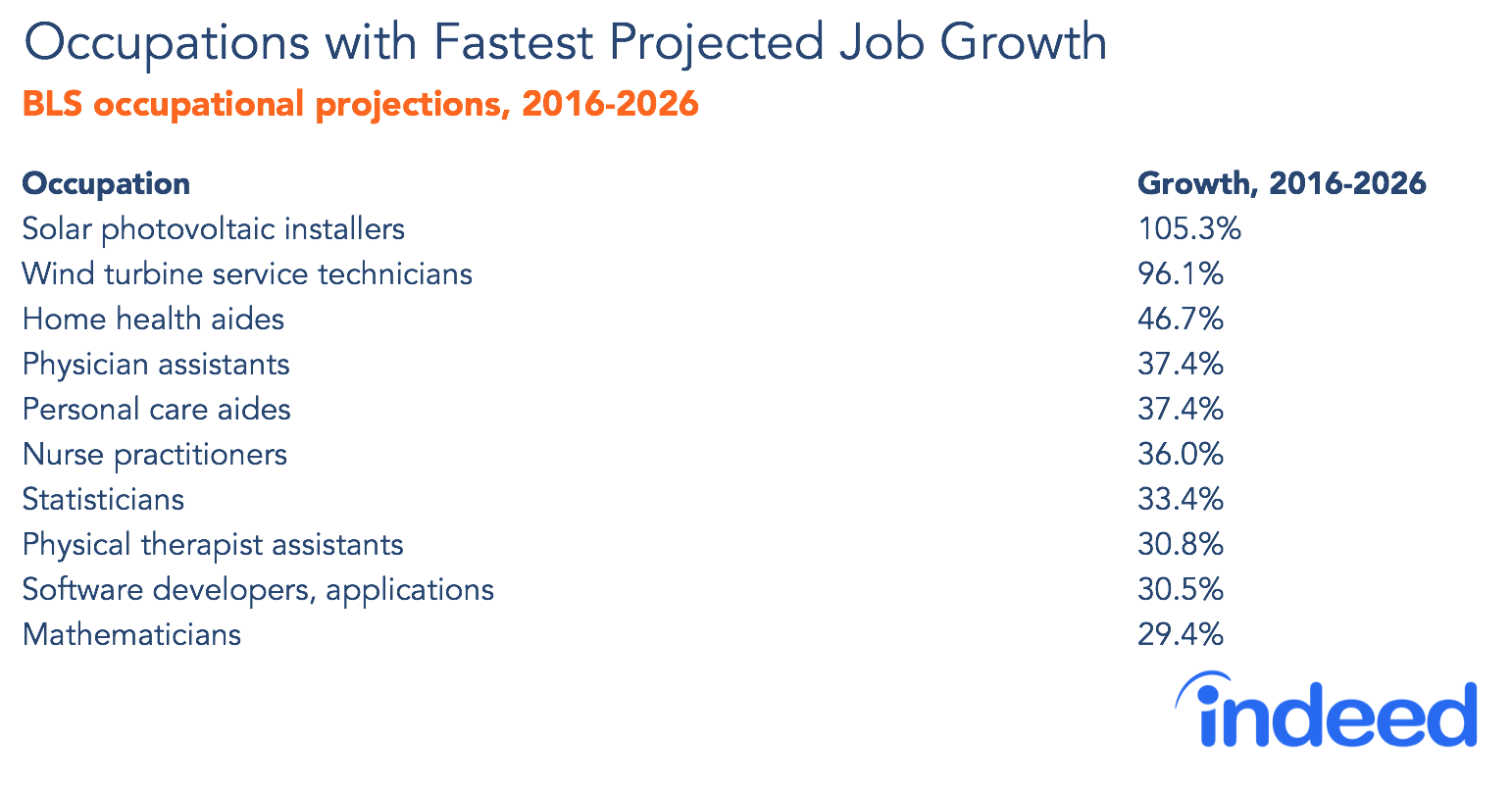
In general, service jobs are projected to outgrow goods-related sectors like production and agriculture. However, services now dominate the economy, accounting for 78% of employment in 2016. As a result, even most shrinking occupations are service-related, such that 72% of the jobs in shrinking occupations overall are in services. Several office support and administrative jobs are projected to have the biggest losses in absolute numbers, including secretarial occupations.
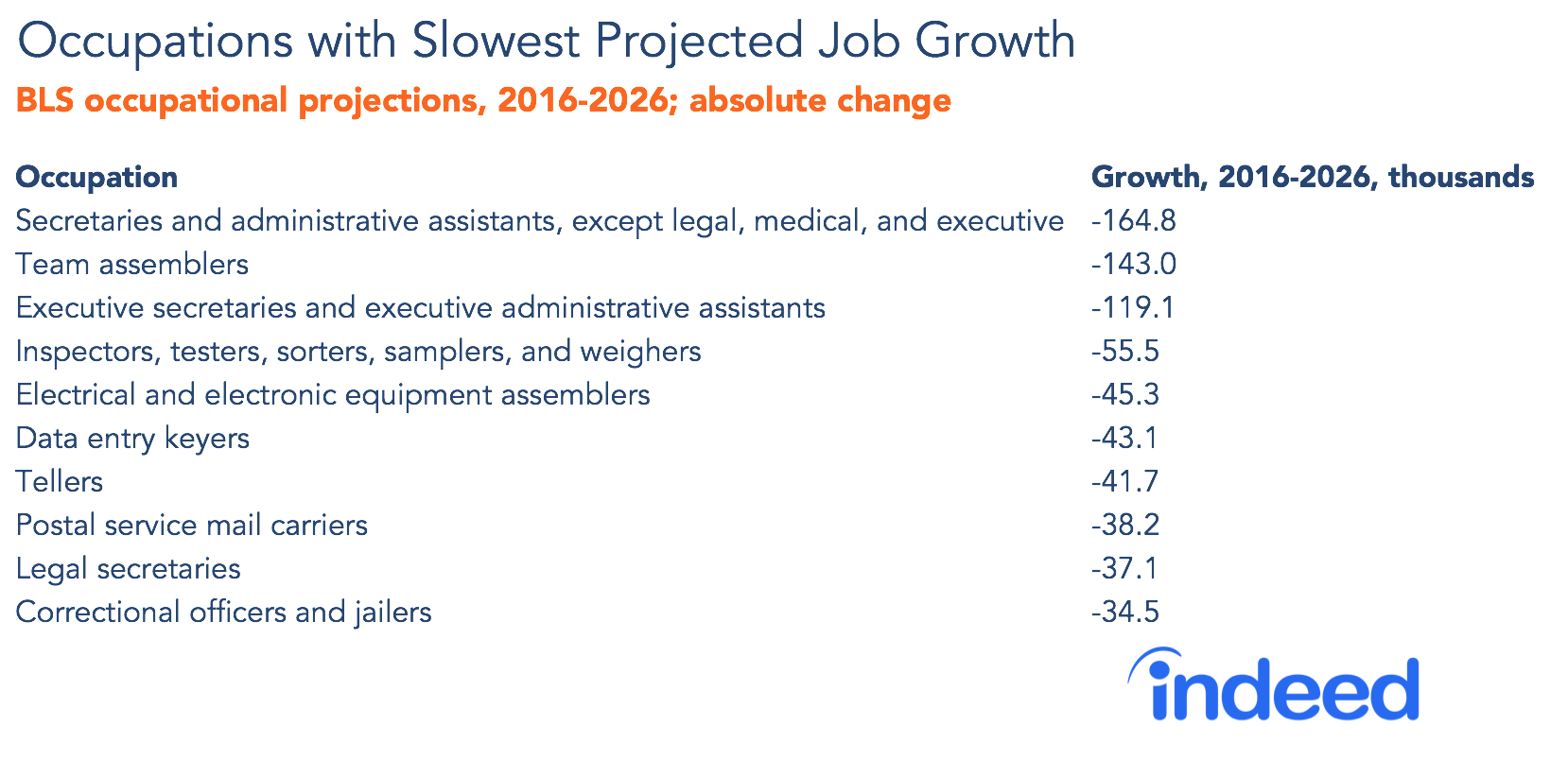
Many of these declining occupations — the secretarial jobs as well as data entry keyers and tellers — are typically held by women. The face of job loss will increasingly be the woman behind a desk rather than the man on the factory floor. Yet many of the fastest growing occupations — particularly in healthcare and personal care — are also traditionally held by women, though strong demand might attract more men.
Job growth might exacerbate today’s gaps
These detailed occupational projections reveal clear broader patterns. Job growth over the next decade is likely to increase inequalities in the labor market. The fastest growing jobs include those with the highest average wages, including several healthcare, computer, and mathematical occupations. Occupations with the lowest average wages are also projected to grow fast, such as home health aides and personal care aides. Middle-wage job growth is projected to lag, at roughly half the rate of the highest- and lowest-wage jobs.
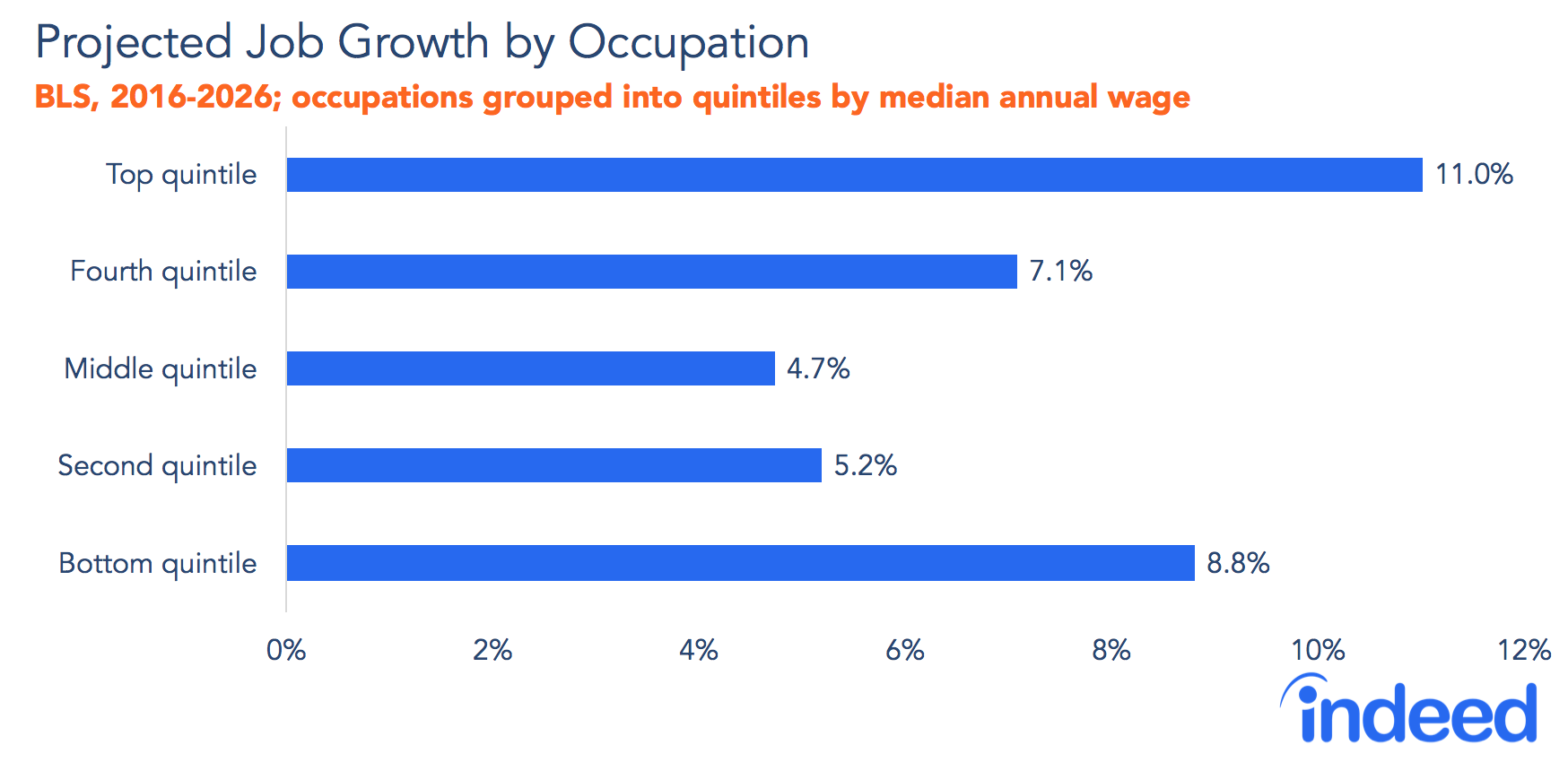
Jobs requiring a graduate degree are projected to grow twice as fast as those requiring a high school degree only or no degree at all. According to the BLS, one-quarter of jobs are in occupations requiring no degree; 40% require a high school degree only; and 35% require some college, a bachelor’s, or a graduate degree. In this sense, the middle of the labor market is jobs that require a high school degree only, and these are the jobs projected to grow most slowly.
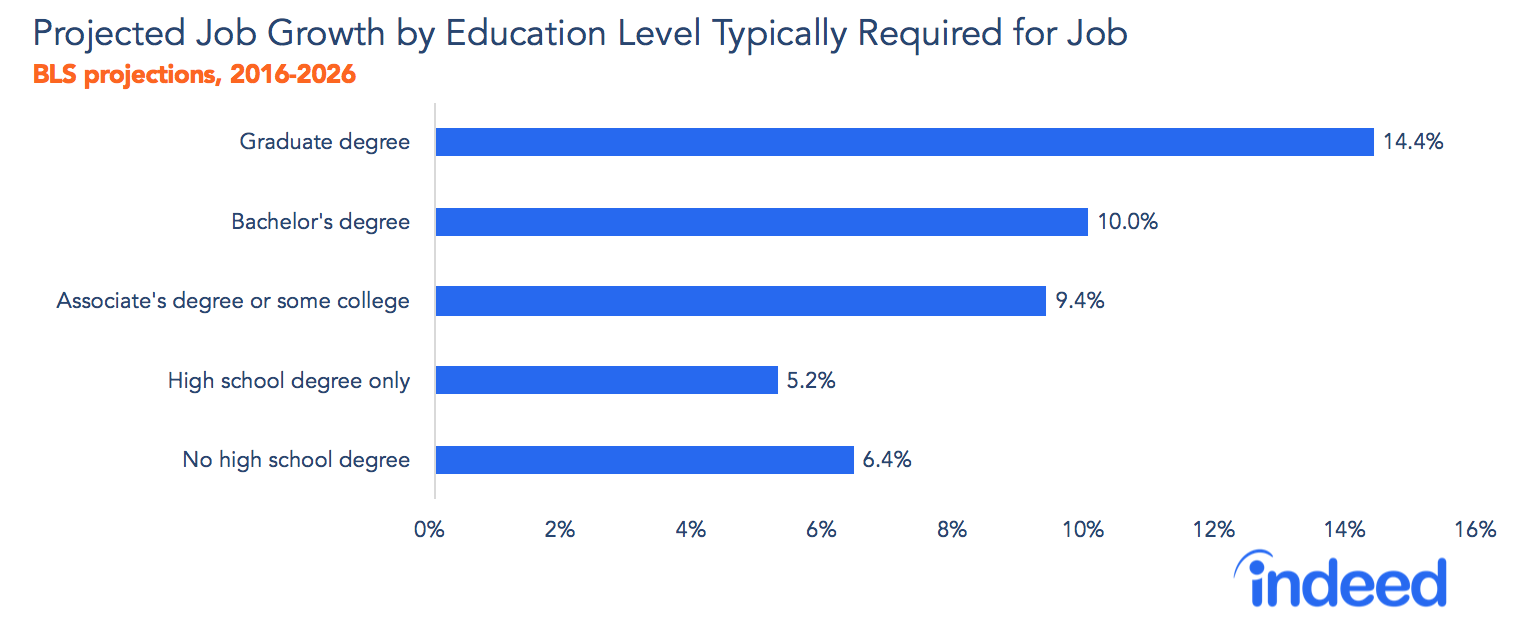
Finally, men with high school degrees might continue to face challenges: jobs they typically hold are expected to grow just 3.9%, compared with 7.4% for employment overall. And no wonder: 60% of jobs that require a high school degree only and are typically male are in goods-related sectors like production (which is projected to decline) and transportation, even though just 22% of jobs overall are in goods-related sectors.
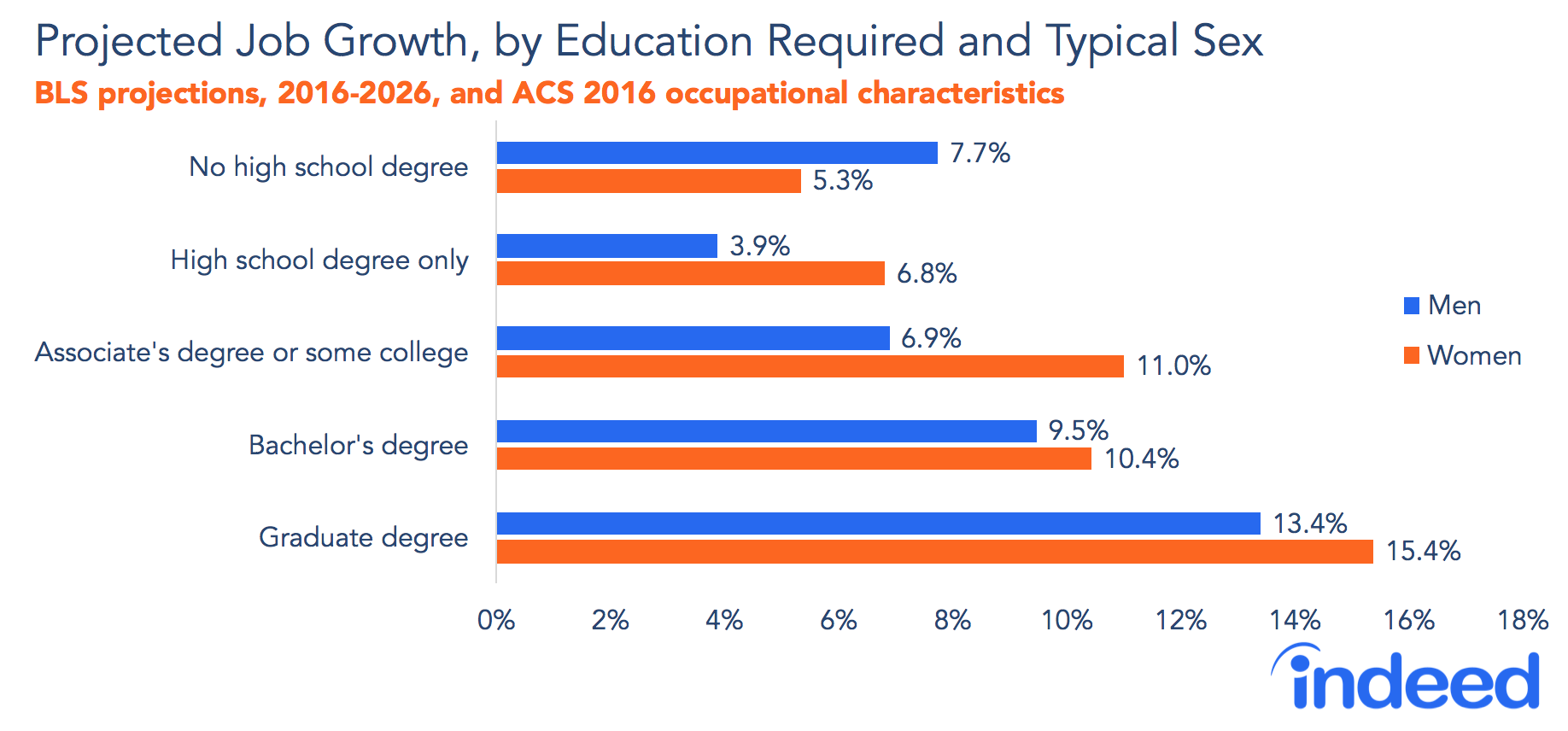
The places that could be left behind
The BLS occupational projections favor some places over others. We combined these projections with 2016 U.S. Census Bureau’s American Community Survey data on where specific occupations are located to see which places are blessed with faster-growing occupations.
The occupational projections suggest faster growth in urban areas than in suburbs, and slowest in rural areas. The two sectors projected to have no or negative growth — production and agriculture — are more concentrated in small towns and rural areas. Many technical, scientific, legal, financial, and healthcare jobs are clustered in big, dense cities.
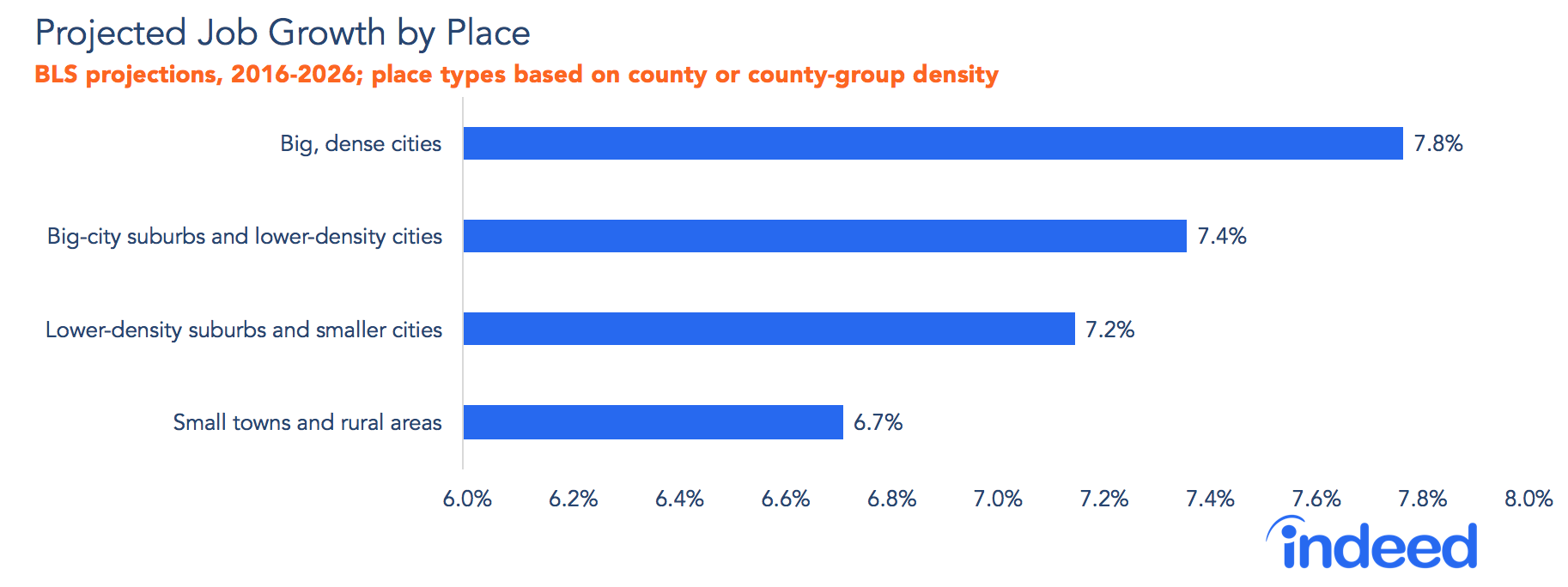
Even among large metros, the occupational mix varies. Metro San Jose — that is, Silicon Valley — has the most favorable occupational mix for future growth, as do other big, coastal metros. Whether this translates into actual job growth depends on other factors, too, like the local cost of living and whether housing construction will accommodate future growth pressures.
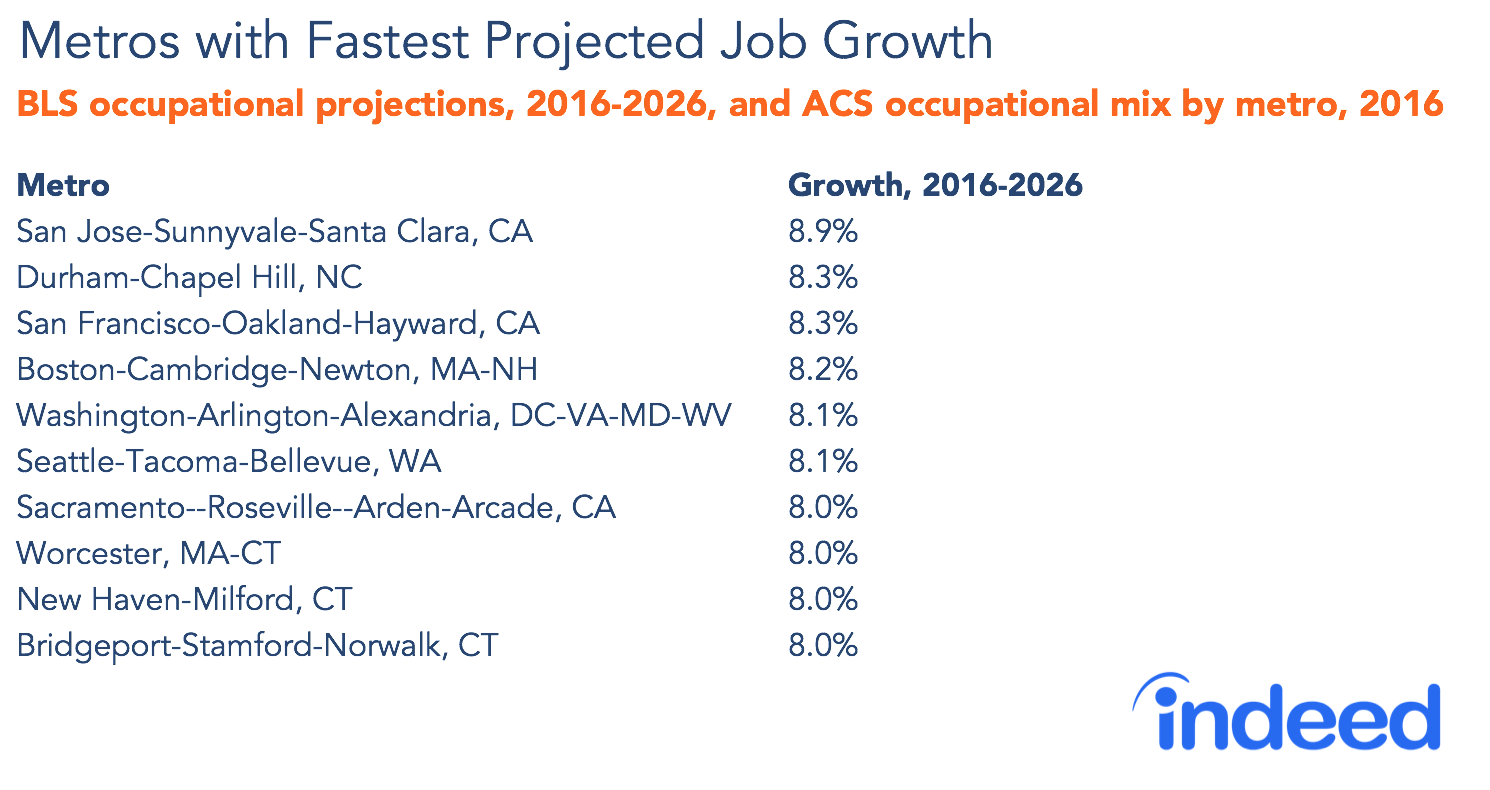
Midsize metros in the South and Midwest tend to have a less favorable occupational mix, skewed more toward slower-growing production or administrative jobs. Again, other factors will influence whether these places end up having slower actual job growth — including their ability to attract jobs in faster-growing occupations.
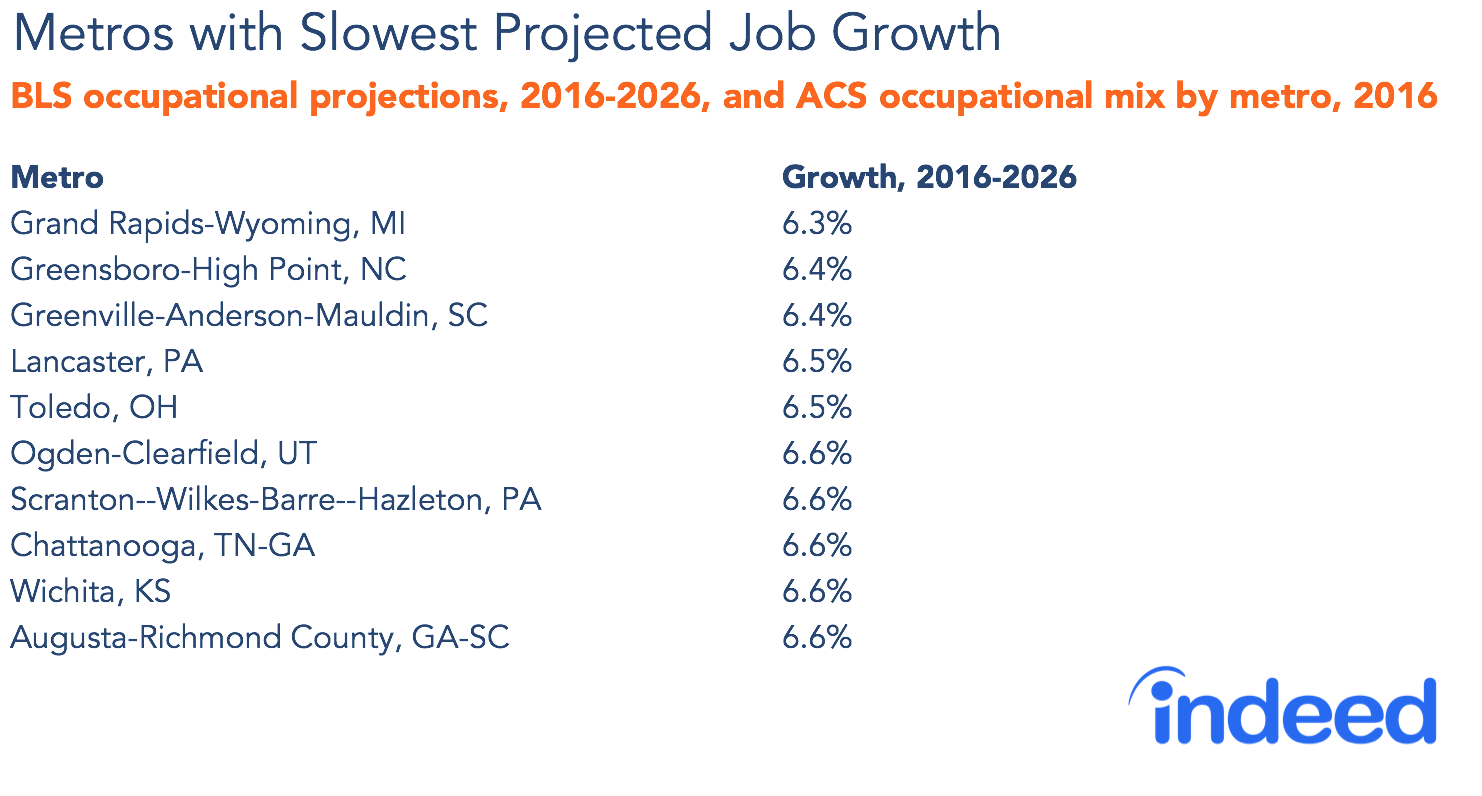
The differences in projected growth among metros are small. Large metros aren’t as different in their occupational mix as you might think: many retail, sales, and service occupations are “everywhere jobs.” Plus, this calculation might understate the impact of job mix on local growth because it ignores any multiplier effect of, say, a local tech boom on local retail demand.
These geographic differences might also lead to further political polarization. Blue America has a more favorable job mix for future growth than Red America, where slower-growing manufacturing and agriculture jobs are clustered. In places that voted for President Trump by a 20-point margin, 16% of workers are in occupations projected to shrink, versus 13.2% of workers in places that voted for Hillary Clinton by a similar margin.
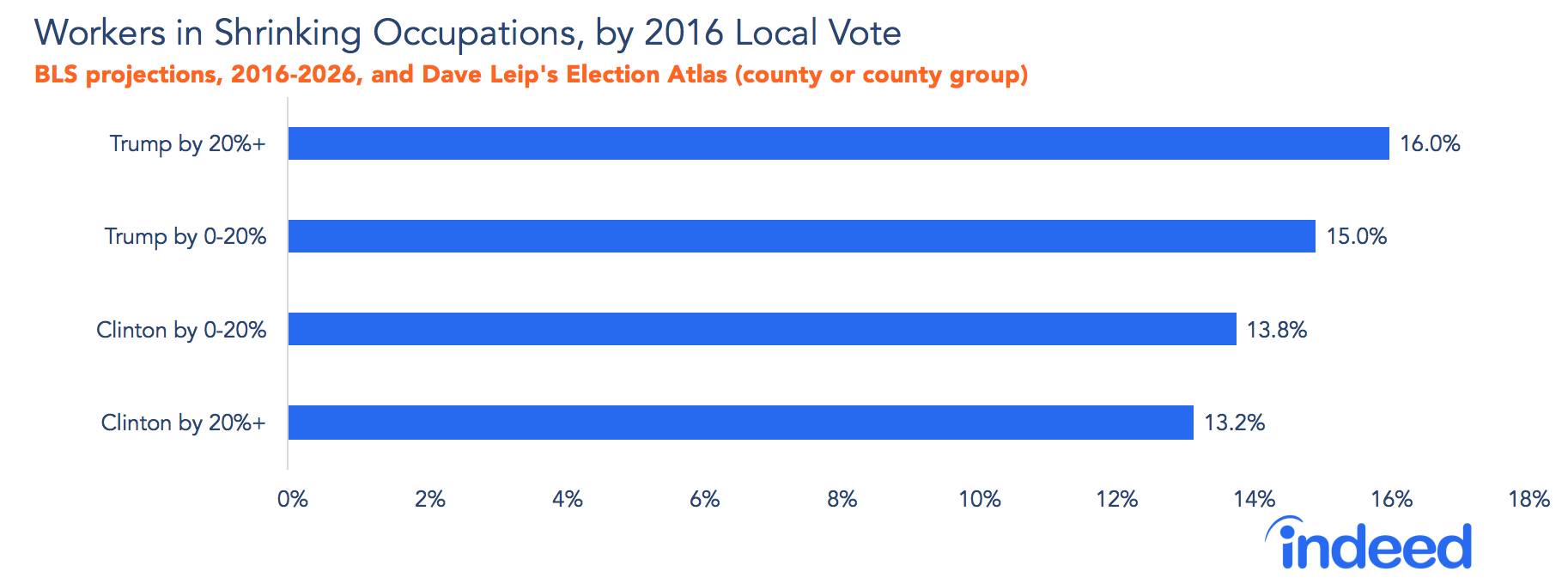
The risk of job loss goes in the opposite direction of other job-market indicators. Likely Trump supporters have, on average, lower unemployment and higher wages than likely Clinton supporters. But should these BLS projections come true, then the labor market could shift further toward healthcare and other high-education jobs, and away from production, middle-wage, and traditionally small-town jobs. In turn this may end up reinforcing or even increasing the economic, geographic, and political polarization of America.






